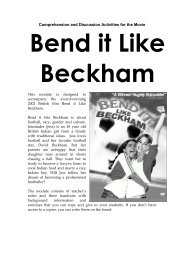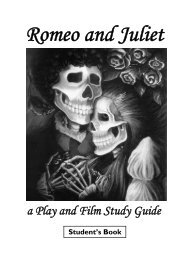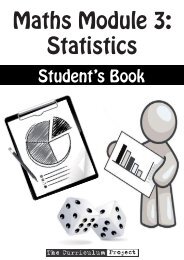General English Pre-Intermediate Modules 1-4 Teacher's Guide (2.1 ...
General English Pre-Intermediate Modules 1-4 Teacher's Guide (2.1 ...
General English Pre-Intermediate Modules 1-4 Teacher's Guide (2.1 ...
You also want an ePaper? Increase the reach of your titles
YUMPU automatically turns print PDFs into web optimized ePapers that Google loves.
Language Reference<br />
Module One<br />
The present simple<br />
We use the present simple for:<br />
1. Repeated events.<br />
• I eat dinner at 7pm.<br />
• She plays football on Saturdays.<br />
2. Things that are true for a long time.<br />
• They live in Mandalay.<br />
• We like fishpaste.<br />
Positive statements<br />
subject verb<br />
I/You/We/They live<br />
work<br />
lives<br />
She/He/It<br />
works<br />
in Sittwe.<br />
Spelling<br />
Third person singular positive statement verb forms:<br />
For most verbs we add -s.<br />
When the verb ends in -ch,<br />
-sh, -s, -x or -z we add -es.*<br />
When the verb ends in a<br />
consonant + -y remove the<br />
-y and add -ies.<br />
When the verb ends in a<br />
vowel + -y, add -s.<br />
* Also: do —does, go—goes<br />
Negative statements<br />
subject auxiliary base<br />
I<br />
You<br />
We<br />
They<br />
He<br />
She<br />
It<br />
don’t<br />
(do not)<br />
doesn’t<br />
(does not)<br />
live<br />
work<br />
read<br />
cost<br />
watch<br />
mix<br />
study<br />
fly<br />
buy<br />
stay<br />
here.<br />
reads<br />
costs<br />
watches<br />
mixes<br />
studies<br />
flies<br />
buys<br />
stays<br />
NOTE: After do/don’t/doesn’t, we always use the<br />
base form of the verb.<br />
• She doesn’t live here<br />
not: She doesn’t lives here.<br />
Questions and answers<br />
1. yes/no questions<br />
auxiliary subject base<br />
Do I/you/we/they<br />
live here<br />
Does she/he/it<br />
2. Short answers<br />
Yes,<br />
No,<br />
I/you/we/they<br />
she/he/it<br />
I/you/we/they<br />
she/he/it<br />
do<br />
does<br />
don’t<br />
doesn’t<br />
live here.<br />
3. wh- questions<br />
These have the same word order as yes/no<br />
questions. The question word goes at the beginning.<br />
• Where do you live<br />
not: Where you do live<br />
• When does she go to work<br />
not: When she does go to work<br />
to be in the present simple<br />
Statements<br />
I ‘m<br />
He<br />
She<br />
It<br />
We<br />
You<br />
They<br />
positive<br />
‘s<br />
‘re<br />
married.<br />
I<br />
He<br />
She<br />
It<br />
We<br />
You<br />
They<br />
negative<br />
‘m not<br />
isn’t<br />
aren’t<br />
NOTE: ’m = am, ’s = is, ’re = are, n’t = not<br />
Chinese.<br />
Questions and answers<br />
To make yes/no questions with to be, we put the verb<br />
before the subject.<br />
1. yes/no questions and short answers<br />
statement: He is from Singapore.<br />
question:<br />
Is he from Singapore<br />
answer: • Yes, he is. not: Yes, he’s.<br />
• No, he isn’t.<br />
statement: You are a student.<br />
question:<br />
Are you a student<br />
answer: • Yes, I am. not: Yes, I’m.<br />
• No, I’m not. not: No, I am’t.<br />
Language Reference<br />
75



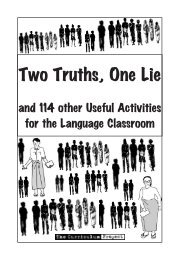
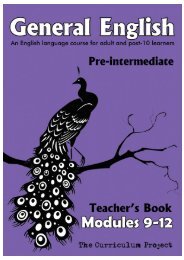


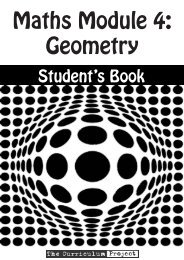

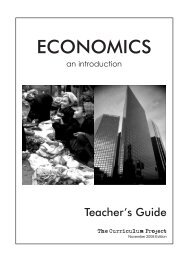
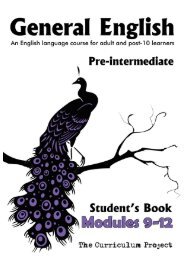

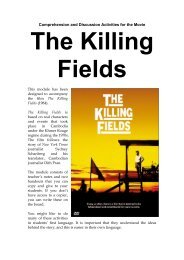
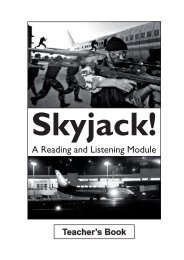
![[Eng] Nov 2012 DRAFT - The Curriculum Project](https://img.yumpu.com/45590859/1/184x260/eng-nov-2012-draft-the-curriculum-project.jpg?quality=85)
